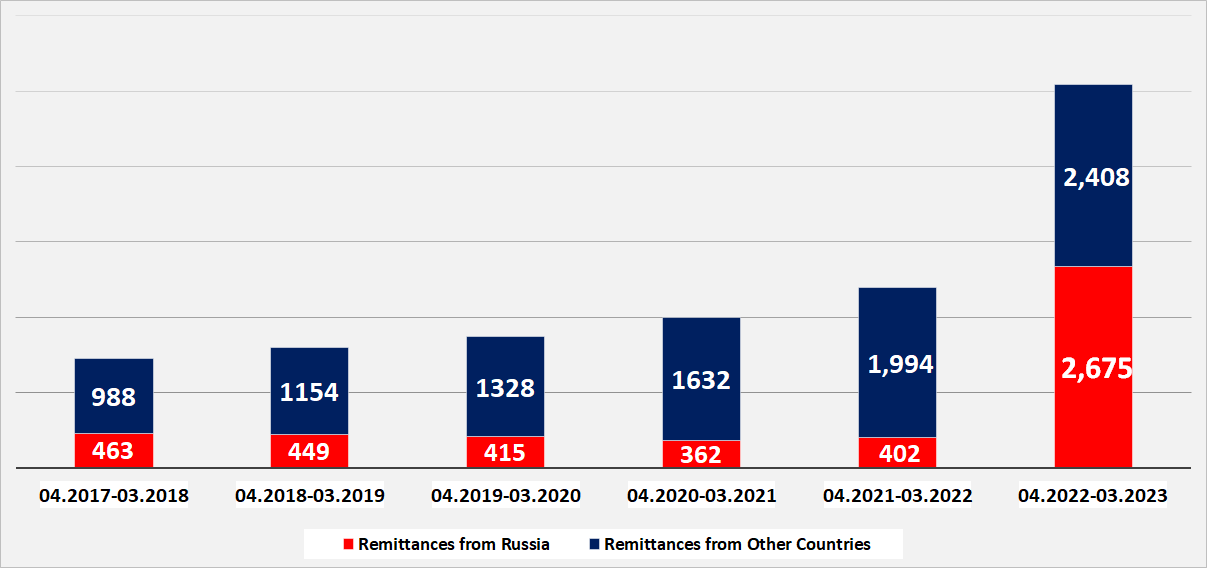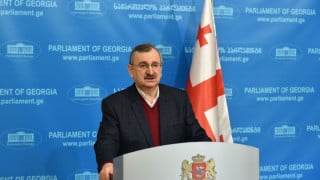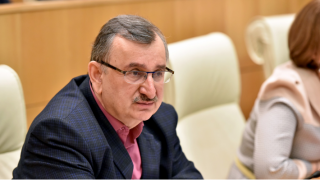Roman Gotsiridze: “The major reason behind the appreciation of GEL is the continuous inflow of foreign currency from Russia.”
Verdict: FactCheck concludes that Roman Gotsiridze’s statement is TRUE.
Resume:
At the moment of Russia’s invasion of Ukraine, the GEL to USD official exchange rate was 3.023. After a year and two months, the GEL exchange rate appreciated by 17.5% and stands now at 2.49.
There are several factors that affect the GEL exchange rate, including foreign trade, foreign direct investments, tourism, remittances, the monetary policy of the National Bank of Georgia, expenditures of the state budget and so on. The year 2022 was a period of post-pandemic recovery when both foreign trade and investments increased, although the largest growth was in remittances from Russia. This trend persisted in the first quarter of 2023 and, therefore, FactCheck concludes that Roman Gotsiridze’s statement is TRUE.
Analysis
Roman Gotsiridze, MP, published a lengthy article about the appreciation of GEL on the business media portal BM.ge where he argued that increased remittances from Russia are the major reason behind this.
In particular, the articles reads: “The major reason behind the GEL appreciation is the continuous inflow of foreign currency from Russia. Had the National Bank of Georgia not bought foreign currency, GEL would have been even stronger today. If the National Bank of Georgia’s foreign currency reserves at the moment of Russia’s invasion of Ukraine were nearly USD 3 billion, currently they exceed USD 5 billion.
Two weeks after Russia’s invasion of Ukraine, the GEL to USD exchange rate jumped from 3.02 to 3.4 by 10 March 2022, largely because of the panic effect. After that, GEL started a virtually uninterrupted appreciation. On 31 December 2022, the GEL exchange rate was 2.70 and on 4 May 2023 it was 2.49.
Graph 1: GEL to USD Official Exchange Rate

Source: National Bank of Georgia
A 12.5% appreciation at the initial stage (after two weeks) of Russia’s war against Ukraine was explained by shock and panic buying. However, the period of subsequent appreciation, which continues virtually uninterrupted for 14 months, is more complex in nature.
Roman Gotsiridze says that remittances from Russia are the major cause for GEL appreciation. In 2021, total remittances to Georgia from foreign countries was USD 2.350 billion whilst they increased by 86% to USD 4.372 billion in 2022. Remittances from Russia alone were USD 411 million in 2021 whilst they skyrocketed by 403% and reached USD 2.067 billion in 2022.
In 2011-2021, remittances to Georgia increased by 88%, from USD 1.248 billion to USD 2.350 billion. This amount of growth took a decade whereas they increased by 86% in 2022.
In 2013, Russia’s share in remittances was 54% but dropped to 18% in 2021 after a steady decline. However, they increased again to 47% in 2022. This jump in the growth of remittances from Russia started from April 2022. Therefore, Russia’s share of remittances would grow to 52% if we take the last three quarters of 2022 as a period for comparison.
This trend persisted in the first quarter of 2023 and total remittances reached USD 1.256 billion which is 130% more as compared to the same period of 2022. Remittances from Russia increased by a whopping 859% and reached USD 679 million. Russia’s share in remittances in the first quarter of 2022 was 13.1% whilst it is 54% as of January-March 2023.
As a nominal sum, a total of USD 2.396 billion was transferred to Georgia from April 2021 to April 2022. Of this amount, USD 402 million was from Russia and USD 1.994 billion was from the rest of the countries. From April 2022 to April 2023, remittances increased by USD 2.687 billion and reached USD 5.083 billion. In this case, Russia’s share is USD 2.675 billion and the share of all the others combined is USD 2.408 billion.
If we compare two periods – April 2021 to April 2022 with April 2022 to April 2023, we will see that total remittances increased by 112%, although, remittances from Russia increased by 499% and from other countries by 21%.
Graph 2: Remittances to Georgia (USD Million)

Source: National Bank of Georgia
In order to understand the full picture, it should also be considered that Russian nationals also bring some money to Georgia in the form of cash. However, it is very difficult and virtually impossible to determine these volumes with any kind of accuracy.
In contrast to remittances to Georgia, money transfers from Georgia abroad increased by only USD 27 million in 2022 from USD 317 million to USD 344 million which could not have a substantial impact on the GEL exchange rate.
In regard to the other macroeconomic factors affecting the GEL exchange rate: in 2022 export increased by 318% from USD 4.243 billion to USD 5.593 billion. This constitutes a USD 1.350 billion growth. In the same period, import increased even more by 33.2% from USD 10.099 billion to USD 13.450 billion which is a USD 3.351 billion growth. The negative trade balance in 2021 was -USD 5.857 billion and in 2022 -USD 7.857 billion. It turns out that despite the growth in export, GEL outflow increased by USD 2 billion in 2022 as a result of foreign trade something which could not have been the reason for GEL appreciation.
For better accuracy it is possible to compare the figures of the last four quarters to the previous four quarters. In this case, the difference is small as opposed to remittances. From April 2021 to April 2022, Georgia exported USD 4.596 billion in products and the country’s total export value increased by USD 1.286 billion from April 2022 to April 2023. In the same period, import volume increased by USD 3.306 billion from USD 10.861 billion to USD 14.167 billion. Also, in the same period, import quantity increased by USD 3.306 billion from USD 10.861 billion to USD 14.167 billion. The difference between import volume and the growth of the export volume is USD 2.020 billion.
There is a strong recovery in tourism and tourism revenues in the post-pandemic period. In particular, tourism revenues increased by USD 2.333 billion to USD 3.918 billion from April 2022 to April 2023 whereas this was USD 1.585 billion in the same period the year before. If we take Russia separately, we will see that tourism revenues increased by 878 million from USD 211 million to USD 1.089 billion in the last four quarters as compared to the previous four quarters.
Foreign direct investments (FDI) also affect the GEL exchange rate. The result of the first quarter of 2023 is unknown but FDI increased by USD 760 million in 2022 as compared to 2021 and reached USD 2 billion.
Roman Gotsiridze also spoke about the reserves[1] of the National Bank of Georgia. As stated by the MP, the NBG’s reserves were around USD 3 billion at the start of Russia’s invasion of Ukraine whilst they are currently more than USD 5 billion. As reported by the NBG, foreign currency reserves were USD 4 billion instead of 3 billion as of 28 February 2022. More precisely, the reserves were USD 3.993 billion and USD 5.004 billion as of 31 March 2023. It is likely that the MP made a mechanical mistake because in the same paragraph he stated that the NBG bought USD 1.025 billion in the last (2022) year and in the first three months of this year. The difference between USD 3.3993 billion and USD 5.004 billion is USD 1.011 billion which is very close to the USD 1.025 billion he named.
The NBG sets the GEL exchange rate with 43 regional and international currencies every working day. From 24 February 2022 to 4 May 2023, GEL appreciated as compared to 42 currencies. It lost value only against AMD. Prior to Russia’s invasion of Ukraine, AMD value was GEL 6.29 and is now GEL 6.44. No economic miracle took place in Armenia. The reasons behind the appreciation of AMD is similar to those behind the appreciation of GEL.
GEL appreciation brings both positive and negative consequences. As a result of the appreciation of a national currency, the government’s external debt decreases. Import is getting cheaper both for rank-and-file citizens to buy items of everyday necessity or household utilities as well as for the government to purchase public transport or weapons. Travel costs also decrease. As opposed to import, export for local producers becomes more expensive. A product which they sold for GEL 1 in the past cost foreign buyers USD 0.3 whereas they now have to pay USD 0.4. As a result, GEL appreciation hinders export growth because it makes Georgian products expensive and less competitive on foreign markets. At the same time, income for those families that are dependent on remittances from abroad also shrinks as a result of GEL appreciation. If they previously exchanged USD 100 and received GEL 300, this amount is now only GEL 250. For those who had loans in USD or EUR, GEL appreciation cut their monthly payment amounts, although it is problematic for those who have savings in USD. This process which has been ongoing for more than a year – GEL appreciation – cannot be assessed as definitely positive or definitely negative for the everyday life of an individual person. For some part of Georgian nationals, it was a positive occurrence and for the other part – negative.
As a conclusion we may say that multiple different factors have contributed to GEL appreciation, including the growth of investment and tourism recovery. However, the growth of remittances from Russia is of a much bigger scale and the appreciation of Georgia’s national currency to such a great extent can be explained mostly by this fact. Therefore, FactCheck concludes that Roam Gotsiridze’s statement is TRUE.
[1] Management of international reserves is one of the functions of the National Bank. The aim of having the reserves is to avoid external shock during a financial crisis, ensure liquidity and support the government to make payments in foreign currency without hindrance. The volume of foreign currency reserves is affected by the National Bank’s interventions on the currency market, grants and credits from abroad as well as the government’s transactions denominated in foreign currency.








